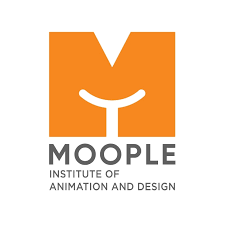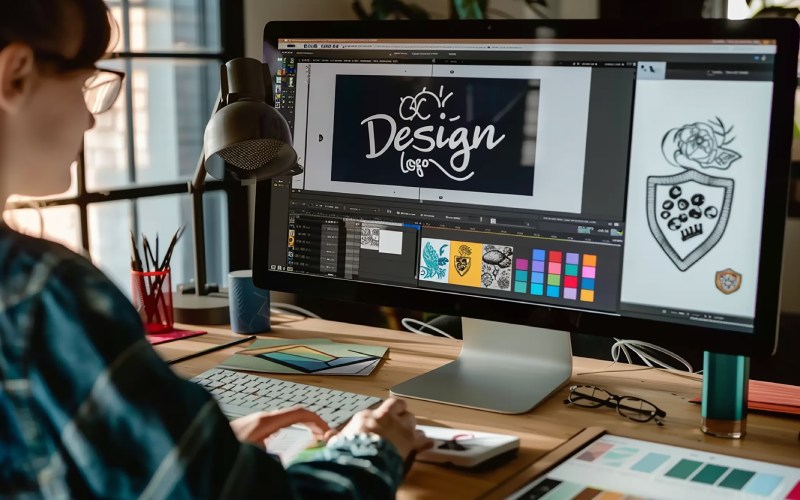Whether you want to create stunning posters, eye-catching social media posts, or professional logos, graphic design skills are a must. If you’re a beginner looking to get started with graphic design courses, this guide will help you understand the basics, explore essential tools, and develop your skills.
Understanding Graphic Design
Graphic design is the art of creating visual content to communicate messages. It involves combining text, images, and other elements to convey a specific idea or evoke a particular feeling. Good design can capture attention, inspire emotions, and make information more accessible.
Key Principles of Graphic Design
Before diving into the tools and techniques, it’s essential to understand some key principles of graphic design. These principles will guide your work and help you create visually appealing designs:
1. Balance:
Balance refers to the distribution of visual weight in a design. There are two types of balance: symmetrical (where elements are evenly distributed) and asymmetrical (where elements are distributed unevenly but still achieve a harmonious look).
2. Contrast:
Contrast is the difference between elements in a design. It helps highlight important areas and creates visual interest. Using contrasting colors, shapes, and sizes can make your design stand out.
3. Alignment:
Alignment ensures that elements in your design are visually connected. Proper alignment creates order and makes your design easier to read. Whether left, right, center, or justified, consistent alignment is crucial.
4. Repetition:
Repetition involves using the same elements, like colors, shapes, or fonts, throughout your design. It creates a cohesive look and reinforces the visual theme.
5. Proximity:
Proximity refers to the placement of elements in relation to each other. Grouping related items together helps organize information and improves readability.
Essential Tools for Graphic Design
To get started with graphic design, you’ll need some essential tools. These tools will help you create, edit, and refine your designs:
1. Graphic Design Software:
Graphic courses in Sonarpur will teach you a lot of tools and software which professionals need to master.
There are many software options available for graphic designers. Some popular choices include:
- Adobe Photoshop: Great for editing images and creating graphics.
- Adobe Illustrator: Ideal for creating vector graphics, like logos and illustrations.
- Adobe InDesign: Perfect for designing layouts for print and digital publications.
- Canva: A user-friendly, web-based tool that’s great for beginners.
2. Drawing Tablet:
A drawing tablet can be a valuable tool for digital illustrators. It allows you to draw directly onto the screen, providing a more natural drawing experience than using a mouse.
3. Stock Images and Graphics:
Stock images and graphics can be a lifesaver when you need high-quality visuals quickly. Websites like Unsplash, Pexels, and Shutterstock offer a wide range of free and paid options.
4. Typography Resources:
Fonts play a crucial role in graphic design. Websites like Google Fonts and Adobe Fonts offer a vast collection of free and premium fonts that you can use in your projects.
Developing Your Graphic Design Skills
1. Learn the Basics:
Start by learning the basics of graphic design. Online courses, tutorials, and books can provide a solid foundation. Websites like Coursera, Udemy, and Skillshare offer courses tailored for beginners.
2. Practice Regularly:
The key to improving any skill is practice. Set aside time each day or week to work on design projects. Experiment with different styles, techniques, and tools to find what works best for you.
3. Analyze and Learn from Others:
Study the work of professional designers to understand what makes their designs effective. Pay attention to how they use balance, contrast, alignment, repetition, and proximity. Try to replicate their work to learn new techniques.
4. Get Feedback:
Share your work with others and ask for feedback. Constructive criticism can help you see your design from a different perspective and identify areas for improvement. Join online design communities or find a mentor who can guide you.
5. Stay Updated:
Graphic design is an ever-evolving field. Stay updated with the latest trends, tools, and techniques by following design blogs, subscribing to design magazines, and participating in online forums.
Starting Your First Project
1. Define Your Purpose:
Understand the goal of your project. What message do you want to convey?
Who is your target audience?
Defining your purpose will guide your design decisions.
2. Create a Mood Board:
A mood board is a collection of images, colors, and typography that represents the style and feel of your project. It helps you visualize your ideas and set the tone for your design.
3. Sketch Your Ideas:
Start with rough sketches to brainstorm different layouts and concepts. This step allows you to explore various ideas before committing to a final design.
4. Choose Your Colors and Fonts:
Select a color palette that suits the mood and purpose of your project. Choose fonts that complement your design and are easy to read. Consistency in color and typography is key to creating a cohesive look.
5. Design and Refine:
Use your graphic design software to create your design. Start with a basic layout and gradually add elements, adjusting and refining as you go. Pay attention to details and make sure all elements are aligned and balanced.
Conclusion
Graphic design is a rewarding and versatile skill in 2024. By understanding the key principles, using the right tools, and continuously practicing, you can develop your graphic design skills and create stunning visual content. Whether you’re designing for personal projects or looking to pursue a career in graphic design, the journey is full of learning and growth. So, get started today and let your creativity shine!

